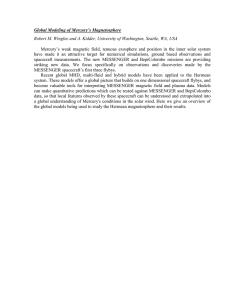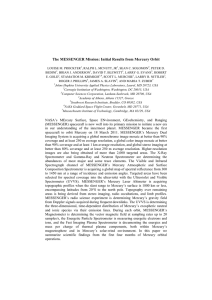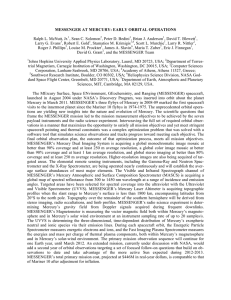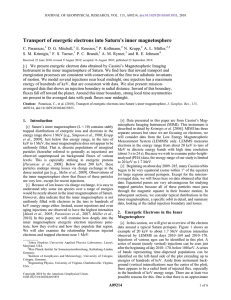Geophysical Research Abstracts Vol. 15, EGU2013-2078-4, 2013 EGU General Assembly 2013
advertisement
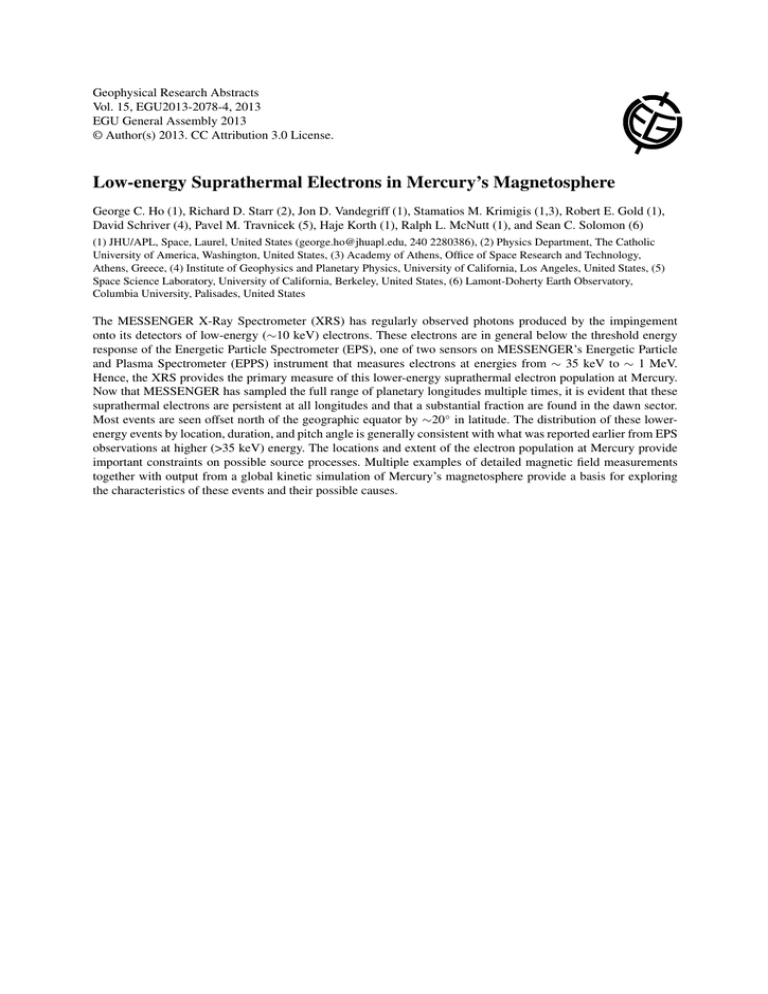
Geophysical Research Abstracts Vol. 15, EGU2013-2078-4, 2013 EGU General Assembly 2013 © Author(s) 2013. CC Attribution 3.0 License. Low-energy Suprathermal Electrons in Mercury’s Magnetosphere George C. Ho (1), Richard D. Starr (2), Jon D. Vandegriff (1), Stamatios M. Krimigis (1,3), Robert E. Gold (1), David Schriver (4), Pavel M. Travnicek (5), Haje Korth (1), Ralph L. McNutt (1), and Sean C. Solomon (6) (1) JHU/APL, Space, Laurel, United States (george.ho@jhuapl.edu, 240 2280386), (2) Physics Department, The Catholic University of America, Washington, United States, (3) Academy of Athens, Office of Space Research and Technology, Athens, Greece, (4) Institute of Geophysics and Planetary Physics, University of California, Los Angeles, United States, (5) Space Science Laboratory, University of California, Berkeley, United States, (6) Lamont-Doherty Earth Observatory, Columbia University, Palisades, United States The MESSENGER X-Ray Spectrometer (XRS) has regularly observed photons produced by the impingement onto its detectors of low-energy (∼10 keV) electrons. These electrons are in general below the threshold energy response of the Energetic Particle Spectrometer (EPS), one of two sensors on MESSENGER’s Energetic Particle and Plasma Spectrometer (EPPS) instrument that measures electrons at energies from ∼ 35 keV to ∼ 1 MeV. Hence, the XRS provides the primary measure of this lower-energy suprathermal electron population at Mercury. Now that MESSENGER has sampled the full range of planetary longitudes multiple times, it is evident that these suprathermal electrons are persistent at all longitudes and that a substantial fraction are found in the dawn sector. Most events are seen offset north of the geographic equator by ∼20◦ in latitude. The distribution of these lowerenergy events by location, duration, and pitch angle is generally consistent with what was reported earlier from EPS observations at higher (>35 keV) energy. The locations and extent of the electron population at Mercury provide important constraints on possible source processes. Multiple examples of detailed magnetic field measurements together with output from a global kinetic simulation of Mercury’s magnetosphere provide a basis for exploring the characteristics of these events and their possible causes.

